An atmospheric image of Newgate in the 1930s (Imagine York, © City of York Council.)
A large part of its charm comes from the light reflected from the paving.
Most of us don’t look at paving much. Maybe only when it catches the light on a wet day.
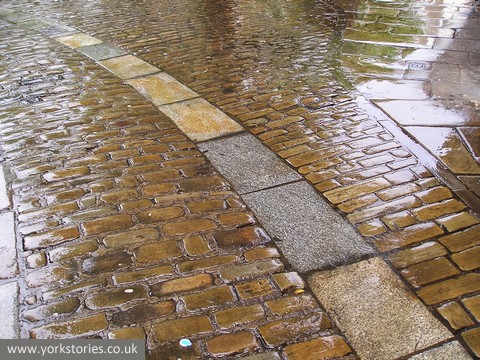
As in Kings Square in 2007, just along from Newgate. Paving soon to be removed, apparently, under the ‘Reinvigorate York’ plans. (Please see King’s Square paving becomes a national concern for an update.)
The leaflet for the consultation on the scheme said ‘the cart tracks are not historically authentic and will not be included.’ Photos from the city archives show that the curving line of cart tracks and setts here doesn’t date from the 19th century, though it looks like it does.
The curve follows the original roadway around the church which used to occupy most of the space in what is now the square.
We’re surrounded by things that aren’t ‘historically authentic’, but do a good imitation of it. And does it matter, when the effect is generally accepted as visually pleasing? A previous generation tried to create/recreate a suitable ‘aesthetic’ here, in the paving.
This summer, paying more attention to what’s underfoot, I’ve seen many examples of what they were trying to replicate. Some will be historically authentic, some maybe aren’t. Though I imagine most are, as those large blocks forming the cart tracks can’t be easy to lift and move about.
They survive in many of the older lanes, or where lanes used to be.
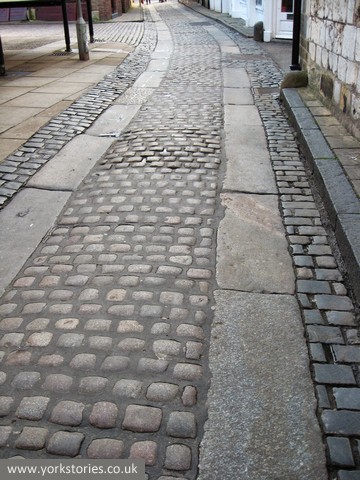
Beginning in the street pictured in the black and white photo above: Newgate.
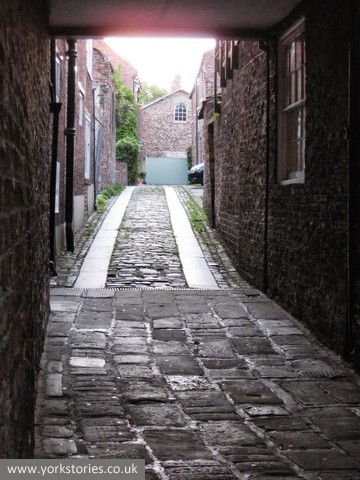
A favourite view: the beautifully named Elbow Lane, off Goodramgate, with the cart tracks reflecting the light.
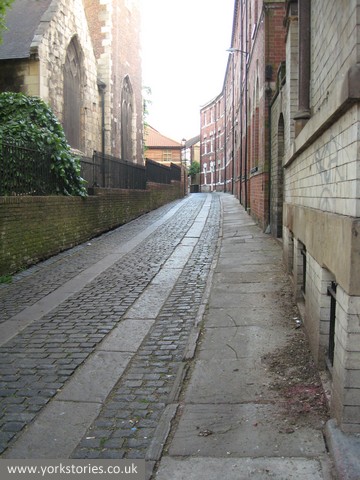
St Martin’s Lane off Micklegate.
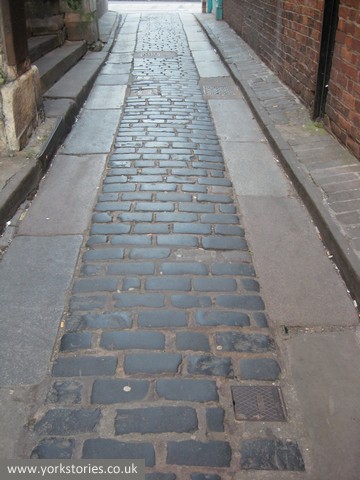
On Church Lane, between Spurriergate and Low Ousegate.
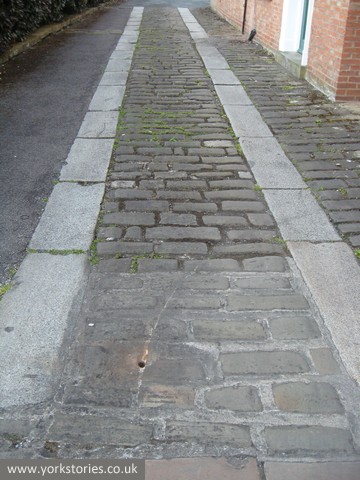
Off Aldwark, alongside Oliver Sheldon House.
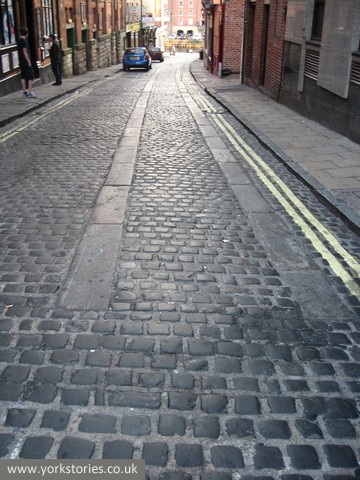
On King Street, off Clifford Street, looking towards the river. The cart tracks narrower than the road. Perhaps a remnant of the old Water Lane which used to be here before.
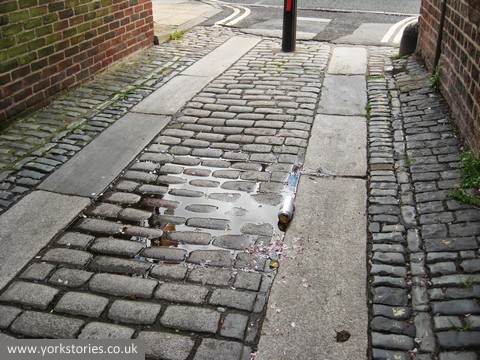
And on Paver Lane, off Walmgate. (Originally called Paviour Lane, perhaps suggesting it was the first lane in its area to be paved?)
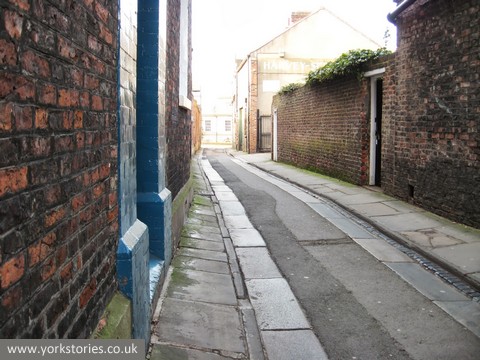
Barker Lane, off Micklegate, where setts perhaps survive under that tarmac, and the cart tracks are still visible.
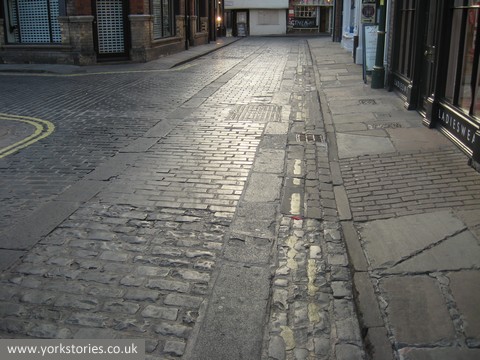
Swinegate with its cart tracks and evidence of various repavings and repointings.
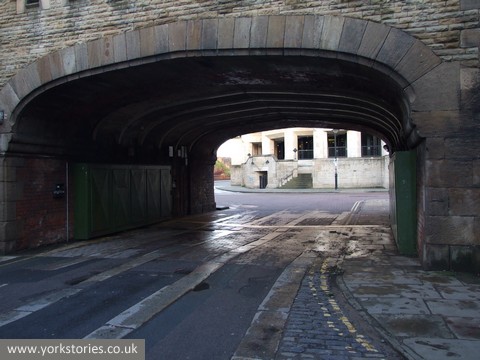
Under Lendal Bridge arch, not two, but four cart tracks.
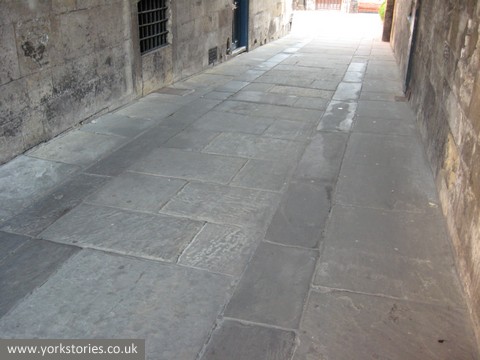
In the passageway to the Guildhall, repaved between, but cart tracks remain.
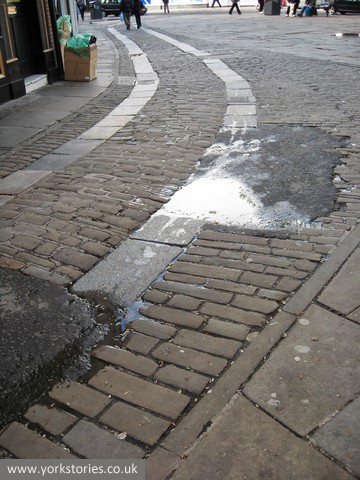
Back to King’s Square, where the same kind of paving curves around the front of King’s Court and meets Colliergate.
So perhaps this particular paving wasn’t laid centuries ago, but it seems to have been a faithful copy. Rather ruined by the bodged tarmac patches, but then I guess that it had already been decided that it would be replaced. Even though no one whose comments I’ve read, including English Heritage, thought that was a good idea.
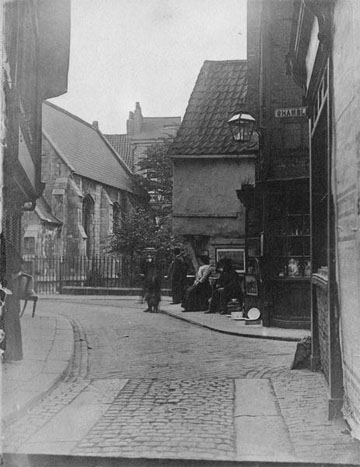
Another photo from the City of York Council archives, late 19th century. It would seem that the cart tracks of Newgate stopped here, where it met the Shambles corner. So though the paving around the front of King’s Court looks like it’s been there for ever, it hasn’t. Another photo of King’s Square, from the early 20th century, also shows no cart tracks, though it does show a very clear roadway where they now are.
Authentic or not, I know many people would prefer to see that paved area left intact. I can’t see any replacement stone looking as good as the setts and cart tracks pictured above, particularly on a rainy day. (And though we may have forgotten it during this sunny hot summer we’ve had, we do have a lot of rainy days.)
A note on ‘cobbles’
References to York’s ‘cobbled streets’ abound, but cobbles are round, and are a very unfriendly kind of surface. There are some cobbled areas around, but most of the ‘cobbles’ we refer to are setts: rectangular, with a fairly flat surface, like those pictured above. If we had as many ‘cobbles’ as people say we have it would be really uncomfortable cycling around the place.
Elsewhere on the web
Background information came from the City of York Streetscape Strategy and Guidance Consultation Draft, (available here, first link in the listing) – see page 15 in particular. And also Streets for all: Yorkshire from English Heritage.
A recent letter to the local press: Square’s cobbles are part of our history
Cobbles and setts photo, Arachne on blipfoto.com and more information on the difference between setts and cobbles.
Picasaweb album (larger versions of photos above, etc)





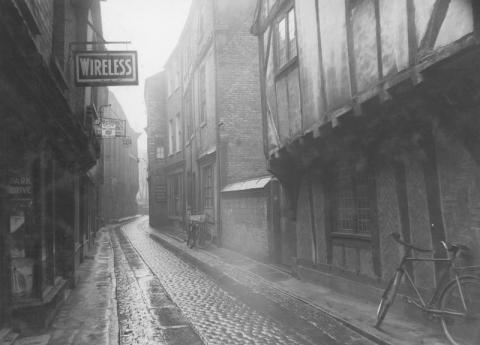
In your consideration do refer to http://www.nationaltrust.org.uk/document-1355775655852/
pages 87-91
concerning the use of cobbles and hoggin in historic environments with particular reference to the National Trust’s experience
That’s very interesting, thank you. I hope those in charge of the various repavings no doubt intended in the future have also read it.
Lovely phrase in the article: ‘the patterning of frequenting feet’.